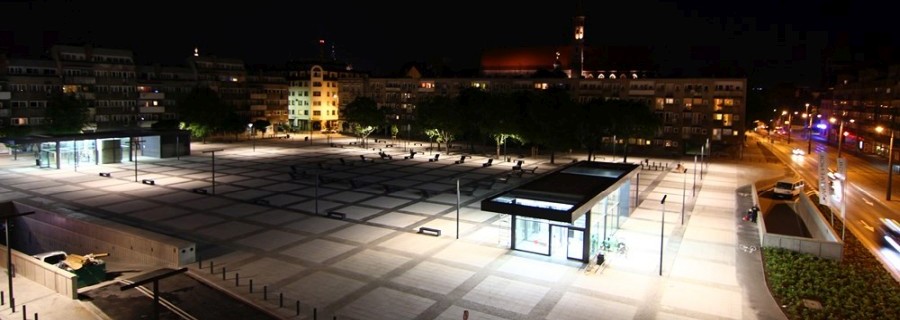The traces of pioneer settlement within the area of the current Nowy Targ square date back to the end of the 12th century. It is assumed that it was connected with the establishment of the “New Town” (1263), which could serve as a competition for the area of the Old Town of Wrocław.
Over the centuries, Nowy Targ was the place where numerous goods were traded. Residential buildings were erected around. Some of them were used by local authorities as town residences. Starting 1534, the square was all covered with cobblestone. In 1732, on commission of the Town Council, a baroque fountain was built in the central point of the square. The fountain represented the figure of Neptune and it was called by the residents Gabeljürgen (George with a fork).
In subsequent centuries, the tenement houses around the square underwent numerous reconstructions. The neo-baroque building of the City Office, erected in 1914-1918 (former seat of the Śląskie Province Supra-Presidium Office) has remained until these days, while the rest of the tenement houses were destructed during the war in 1945.
In 1909, the trading centre was moved from Nowy Targ (New Market) to the nearby Hala Targowa (Covered Market). During World War II, a spacious air-raid shelter was built under the surface of the square. In the post-war period, the Szaber Plac was located at the square. The construction of residential buildings which exist until this day was commenced in 1950s and 1960s.


 Polski
Polski
